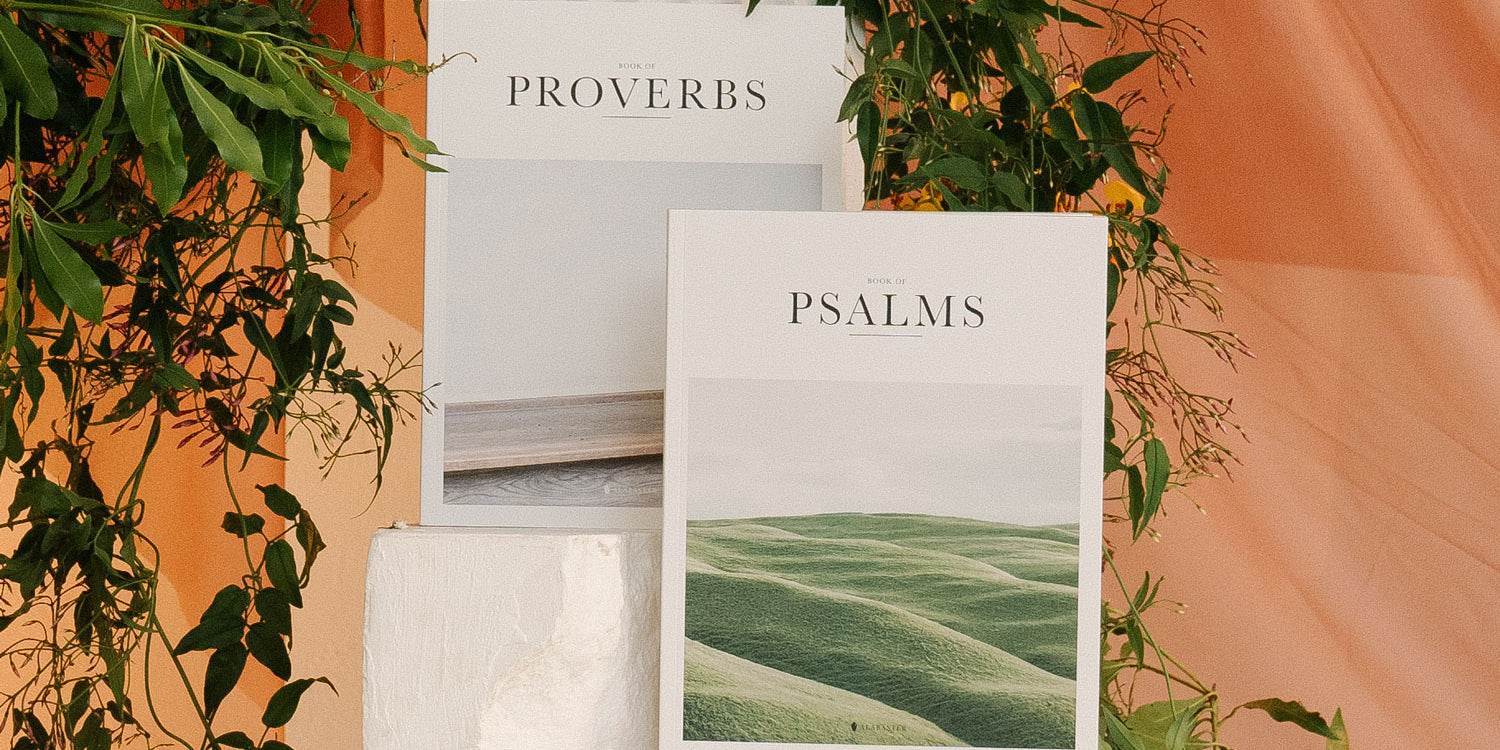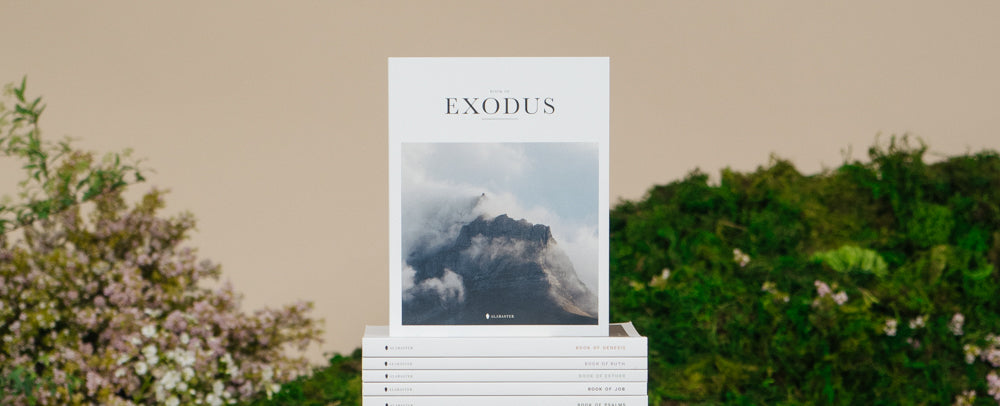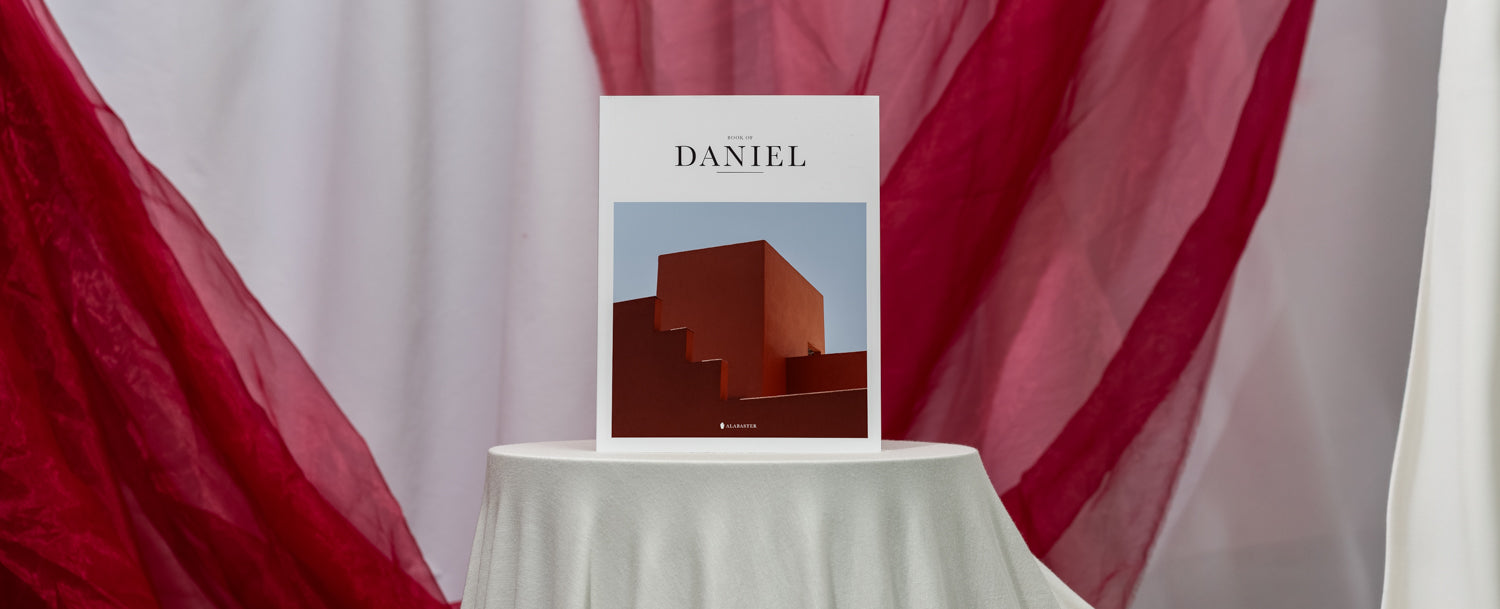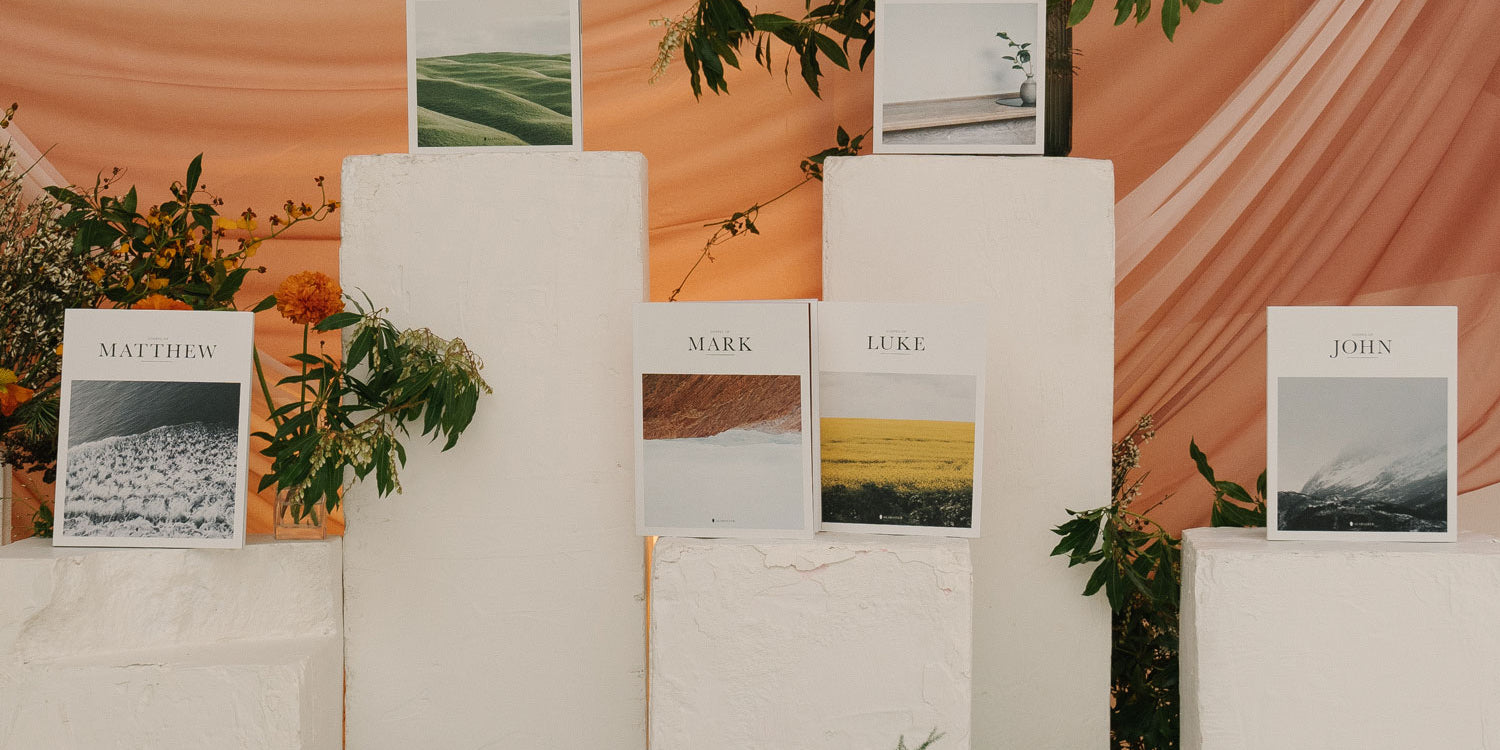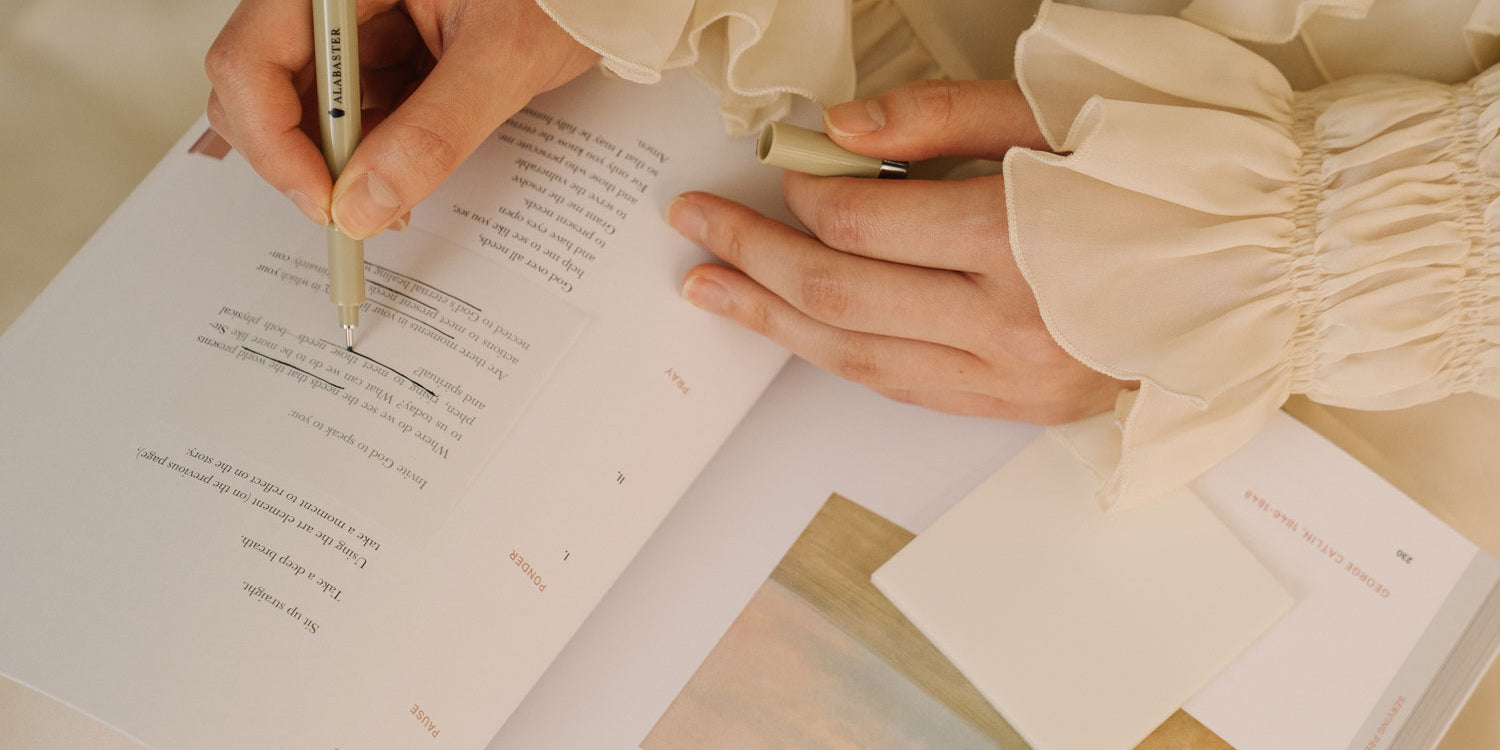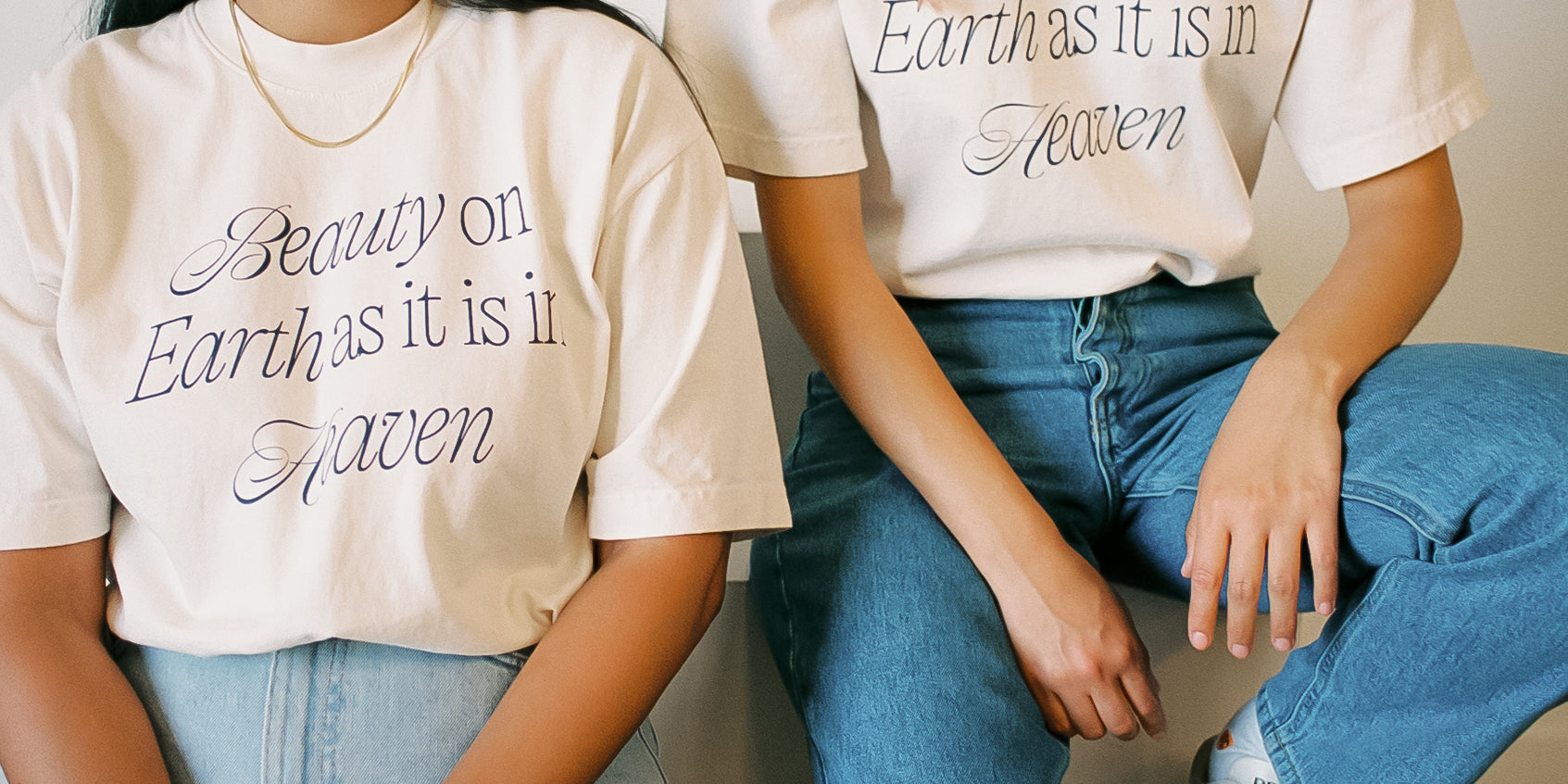"All throughout scripture this is what God is doing: inviting people to raise their voice and to act, to create, to do, to be people who speak out against injustice and then create and be and help others become love.”
When we think about our work of making (our art, our companies, our gardens, our mixtapes, our things in the earth), it is essential that we locate that creative energy deep in our life with God. The call of makers, of those of us who craft, cannot be seen as a separate vocation sprinkled over our knowing Christ but as our collective returning to the old things that were true at the foundation of the world.
Where does our creative spark come from? Why does it matter that we make? What is the purpose of our artistic endeavors? How is this relevant to a life with the Lord? These are fundamental and important questions to address when we consider the sacred task of making.
Here are two reflections from the books of Genesis and Exodus. They are meant to be an introduction, an exercise in looking at scripture through the lens of the creative. They are not exhaustive commentaries, but a first step in connecting our making to our life with God. These are launching points for developing a theology of making.
Our desire to create is an imprint of the divine
The oldest story is one of making. God created. God made. God formed.
God took the void and gave it context. And it was good. (Genesis 1:1)
It matters that the first action of God was a cosmic, community art project. A triune fellowship, ordering the skies and filling the earth. “In the beginning God created” opens possibility that opens possibility.
We must never forget that creatives are possibility makers.
God’s vocation as a generous Creator is the first thing before all of the other things in the book of Genesis. This is good news.
As an outflowing of the generous life of God, humans were made. (Genesis 1:27). Humanity is a divine design initiative.
If we take seriously that humans are created in God’s image, that we are formed as a reflection of our Creator, then the question of how we handle our own particular designing and making becomes vitally important.
God’s making fills the Earth with good things. What does this say about how our making ought to be?
Our desire to make finds its energy source from God’s divine design initiative. God was the first artist to put something of themself into their art, and we have all followed in that legacy. Can we, too, partner with God to fill the earth with good things? Can we too launch creative projects that heal, restore and hope?
The first commandment from God to humans is not found in Exodus, but here in the beginning. “Be fruitful and multiply,” the call to fill the earth and steward it. (Genesis 1:28)
Our creating is a part of the unfolding, generative process of God’s goodness filling the earth. Our desire to create, even something as simple as cooking , or writing in a journal, is an imprint of the divine, designed into the fabric of our existence. Artists and creatives feel this acutely.
We are not only invited to create new things (Genesis 2:19) but to partner with God to fill the Earth with the divine creative Spirit that humans received as a gift. Even in a fragmented world, this is still our primary task. It is one of the old things that were true at the foundation of the world, and we cannot afford to forget it.
This does not mean that all the things we make are good, but it does mean that it is good that we are making things. As humans and image reflectors, our invitation is to partner with God in the creative flourishing of creation. We are makers, because God is the First Maker.
Creative projects connect communities
In the book of Exodus, five chapters (35-40) are devoted to describing the scope of a public work of art, the implementation of its construction and the impact it has on a community. It is a process shot through with the presence of the Lord.
The story begins by describing the Israelites donating a vast array of resources for the public work of the Tabernacle — a moveable construction where the Spirit of the Lord was to dwell. (Exodus 35:4-9).
Gold, silver, bronze, various colors of yarn and fine linen, goat hair, ram skins dyed red, durable leather, acacia wood, olive oil, spices, onyx stones, and an assortment of gems are all collected as resources for the Tabernacle project. The things of creation are harvested for a new kind of creating, and everyone from the community is invited to participate in its funding as they are able.
Then comes the invitation to the makers to do their making: “All who are skilled among you are to come and make everything the Lord has commanded” (Exodus 35:10).
Come and make everything the Lord has commanded. Be fruitful and multiply. These are commands coming from the heart of God.
The community responds to the call of the Lord and collaborates to make something beautiful in worship to God (Exodus 35:20-29). Some fund the project, some give their creative skill, but to execute this kind of sacred public work requires the participation of all.
Exodus 35 stands at the intersection of generous donation, artisan skill, and divine commandment. The result of that creative labor is a connected community, and one of the singularly important sacred constructions of human history.
The place where the presence of God could dwell among the Israelites was made in a collaborative, sacrificial process (Exodus 40). Each giving what they could in a dynamic creative process that allowed the whole of the community to experience the Tabernacle presence of God.
Why does it matter that we make things? Why do we need to bother with creating? Because creative projects connect communities. People to people. People to the earth. And people to God.
The common creative spirit placed in all of humanity is a starting point for connection, and even a returning of things fragmented into things made whole again. We are Imago Dei, given the Creator’s image, and able to make with one another in the common service of human flourishing.
To rearrange the materials of the earth into something new is to extend possibility into the world. This is our stewardship. It is a part of our fruitfulness and multiplying.
And when we do our making, together, we are living out our life with God in a full and real way. Our making in community is a part of our returning to the old things that were true at the foundation of the world. And it is good. Amen.
Words—Geoff Gentry
Photos—Bryan Ye-Chung

